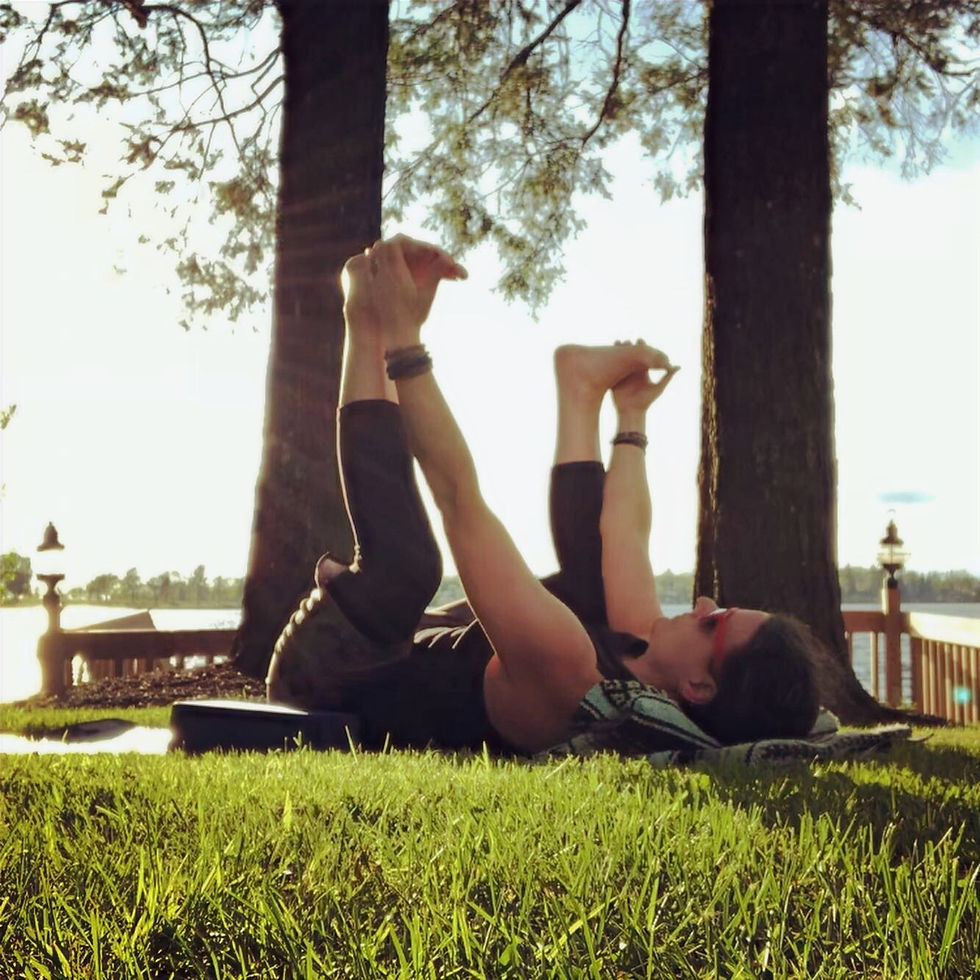Regulate and ease common pain and discomfort with yoga
- Joy Zazzera

- Feb 28, 2021
- 4 min read
Chronic or persistent pain, particularly among the most common complaints, can have many factors involved - and are not always specifically associated with it’s felt location in the body.

As a yoga teacher that works with adults determined to decrease their level of pain and discomfort hindering their daily life, there is one resounding theme I have noticed not just with them, but in anyone I speak with about yoga. They identify heavily with their pain as a very real, annoying and 'in the way of life' experience. That’s because it is all of those things, and more! Pain is a complex and subjective individual experience. As a double knee replacement patient, I have my own unique relationship to it, pain both before my new protheses and pain after in my current life, as a much more pleasant and controllable experience.
Pain is either coming from a mechanical issue in your tissues (like a disc herniation or ligamentous tear) OR from an up-regulation in the nervous system but it also gets filtered across many other variables. Pain science research tells us that pain is influenced by MANY FACTORS and can include the following:
Biological maps and psychological conditions, such as our beliefs, emotions, sleep, stress, and past experiences.
Social realms, such as family relationships and think-systems and other long-engrained influences, even to how the world is overwhelmed with and associates to low back pain.
One way to deal with unpacking some of these factors as a way to better understand exactly if, where in the physical body the tissue damage is or isn’t, is to improve the relationship we have with being able to self-regulate our nervous system.
Our nervous system relies upon sensory input in order to regulate how we feel pain. It is also the command center - your internal GPS - for how you will sense your environment and then respond with movement choices, known as your motor-control. In short, your body’s degree of efficiency or lack thereof of it, to move as a balanced and stable even system of tension (what it is built to be!) is dependent upon all of those factors and more.
Since we cannot realistically begin to undo the enormity of unhealthy influence our live have endured at all once, where we can have direct influence is to specifically practice giving our body improved sensory information, bettering our body awareness and practicing non-judgmental awareness, a opportunity very much at focus in a more therapeutic yoga practice.
If we could learn to create optimal conditions for keeping a clear channel for our vertebrae, and essentially for all joint positions, we learn to connect to these areas through more positive experiences, setting our selves up for how evenly our spine, and other joints are able to rely upon support by the surrounding and adjacent tissues.

A even system around the entire structure ensures more efficient joint stabilization and balance and gives us more options when we come to our edge - either due to movement challenges or through amplification of pain - and have to make a decision. By taking a magnifying glass to the tissues closest to the spine, and other joints, wherever our focus, we are much better to effect the disturbance between the quality of torque our superficial systems provide us and the quality and resilience of the deeper systems that actually control how well the larger muscles function. We’ve spend alot of time overloading inefficient movement patterns, and so we have to first own our range of motion, our limits, and our engrained responses and then learn to acquire better body awareness by connecting to our deep player of musculature.
A mindful and easeful yoga practice that doesn’t replicate many of the physical demands our regular life does, creates the optimal environment in which to befriend our nervous system and improve our neurologic awareness, including helping us to connect more deeply to these deeper tissues we cannot necessarily feel like we can when we “engage our glutes.” Our gluteus Maximus is not a mindfulness muscle; our Multifidi are. I’m continuing to learn new ways to help my clients get more familiar with their ability to engage and draw support from their deeper muscular - the best way to accomplish this is an easy, relaxed environment that isn’t asking for movements so demanding of the muscles we use daily. The guidance of a yoga teacher committed to an on-going study of how the zoomed in view the human body works within the big picture system can help create an environment infused with more conscious language, understanding of red flags, context and meaningfulness to students.

Yoga that is not just about altering our strength and balance muscularly, but just as importantly is about practicing positively altering our neurologic awareness can offer the most powerful influencer in changing your relationship to your everyday pain and discomfort. Beginning with small commitments of mindful movement and progressing over time, sets optimal conditions for dampening our reaction to pain and discomfort through developed improved neurologic awareness, even if your pain is coming from a direct issue in your tissues.







Comments